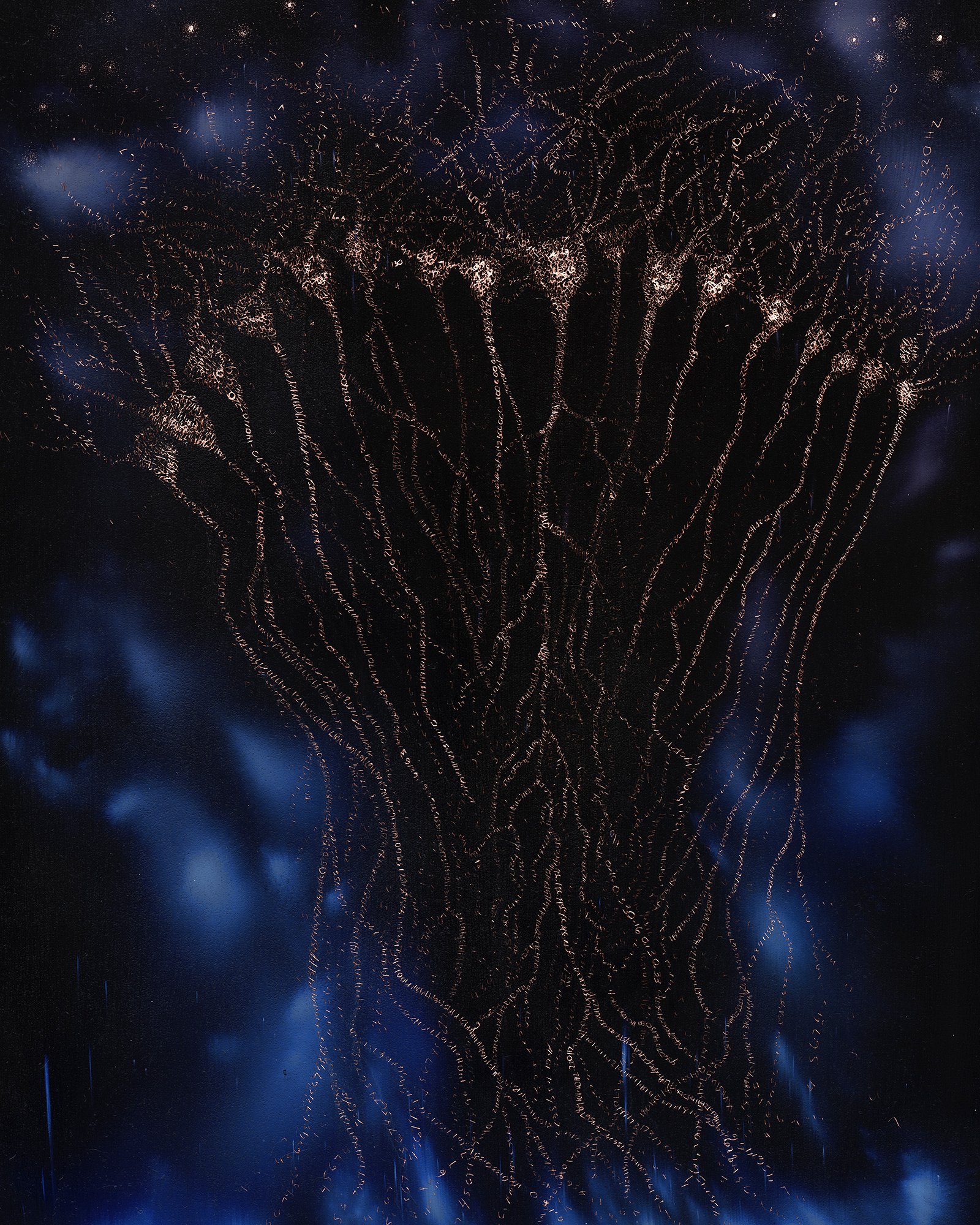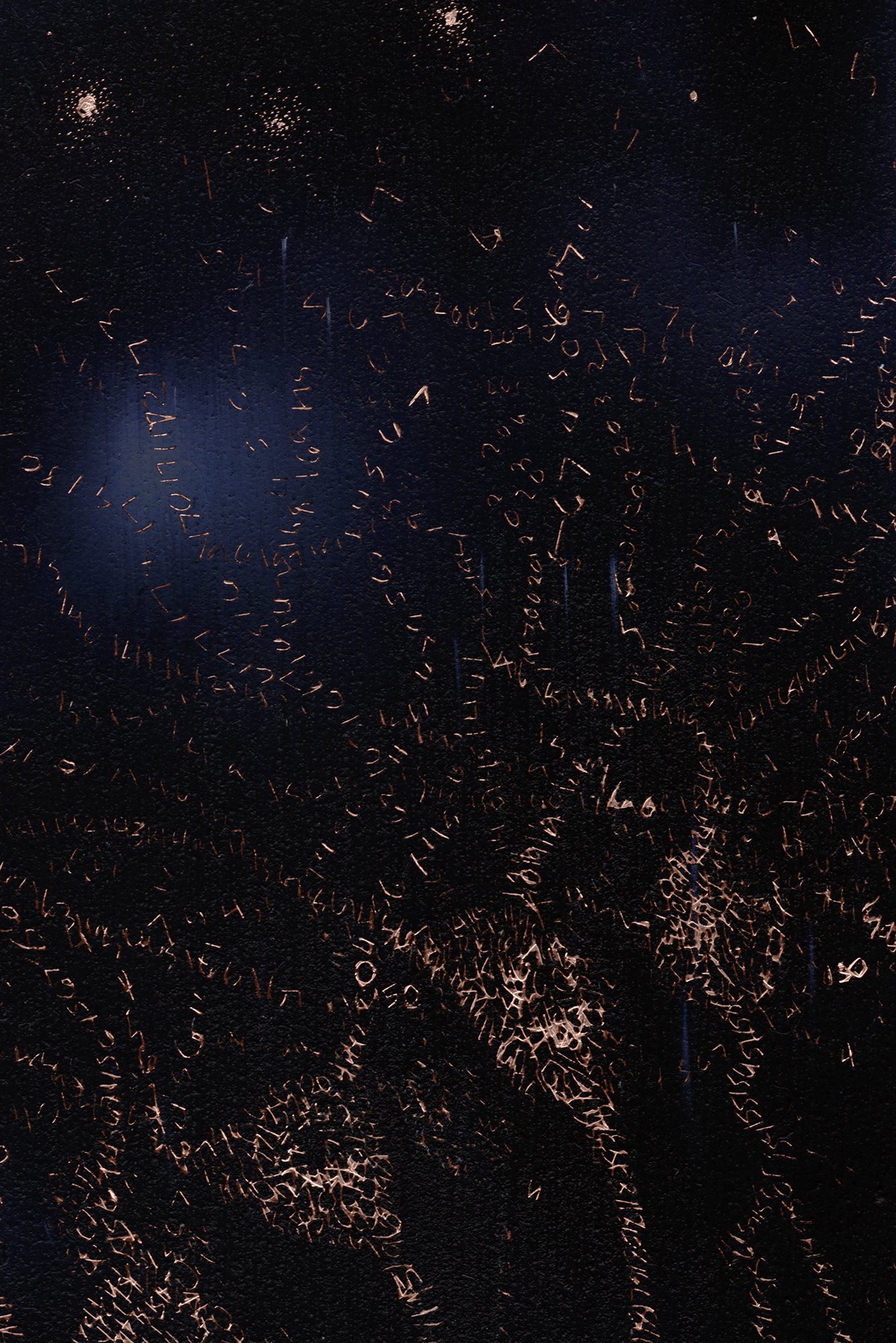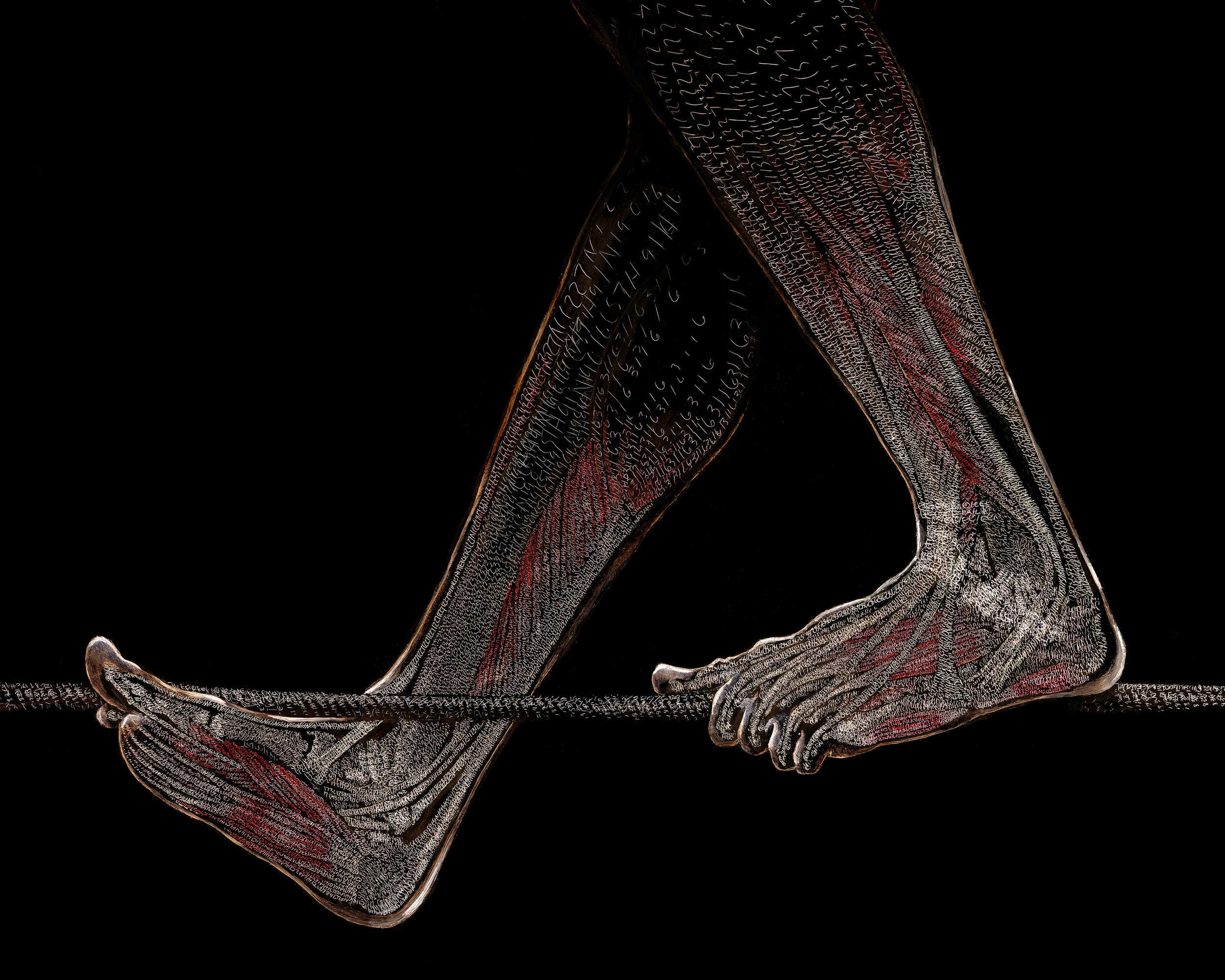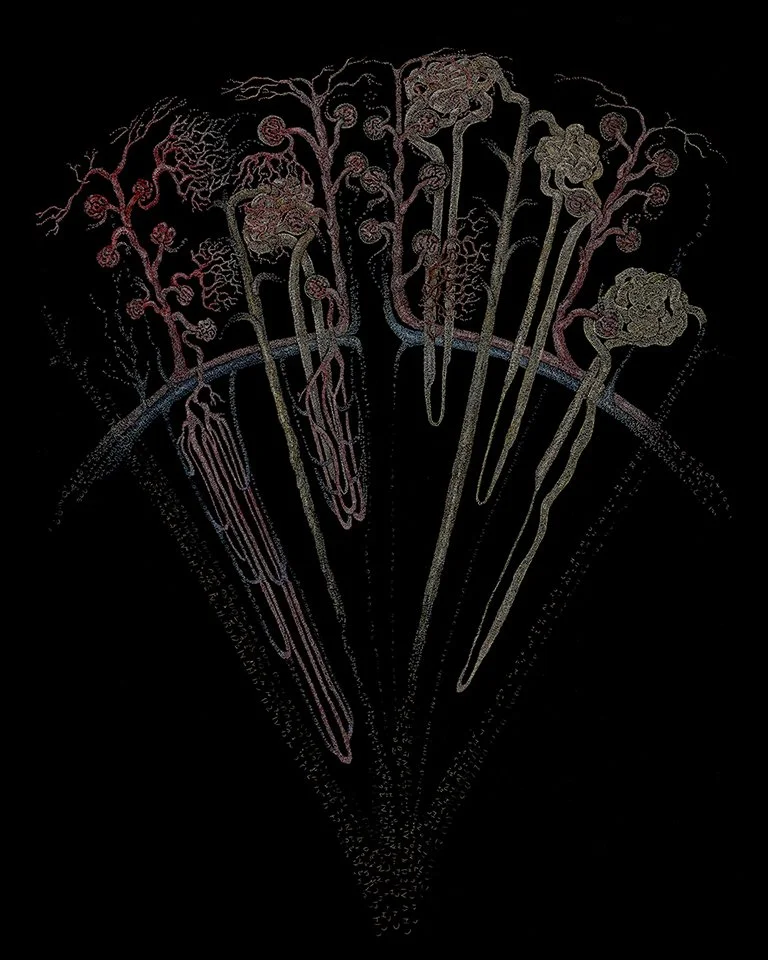Reproductions
Click an image for all available sizes, from 8×10 paper to 32×48 Limited Edition canvas reproductions. All reproductions come with a description of the numbers and equations used to hand create them.
The reproductions listed reflect our current inventory and will ship out in a timely fashion.
Synchrony - Olfactory Cortex of Brain
Synchrony - Olfactory Cortex of Brain
If the brain were a rock band, with each region performing in a unique but coordinated fashion; the olfactory cortex would be the drummer; it sets the beat.
Scientific description:
Hippocampal (HC) oscillations are phase locked to that of the Olfactory cortex during nasal inspiration. This modulates the theta range local field potentials of the HC., and coordinates Sharp Wave Ripples to the cortex involved in memory formation and retrieval. Memory encoding and recall are improved for memories formed or recalled at the end of nasal inspiration.
Breakdown of scientific description:
The rhythm of the Hippocampus is usually around 4-7.5 Hz (theta). The timing of those waves are coordinated in part by the activity of the olfactory cortex when we breathe through our nose.
There is an incredible moment of synchrony when the hippocampus sends a memory to the cortex for long term storage. During this brief (30-100ms) synchrony 50,000-100,000 pyramidal hippocampal neurons fire together at a high frequency local field potential in the high gamma range (90-150 Hz). The oscillation pattern of the olfactory cortex participates in determining when this synchrony occurs, therefore scent and breath are driving factors in determining what we remember. Research also found that memories are formed with higher resolution and better recall when breathing through the nose, so nasal breath also participates in how well we remember. No improvement was found when breathing through our mouth. Further research found that a large area of the cortex is modulated by nasal inspiration, including regions important for problem solving and creativity.
Therefore nasal breath participates in the coordination of memory formation, memory retrieval and higher cortical processing.
Special thanks goes to Dr. Brittany Alperin for collaborating on the research for this drawing.








